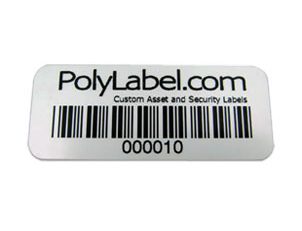How To Asset Tag Equipment
As the name suggests, asset tags are labels with an adhesive applied on one side, allowing them to stick to objects. They work as identifiers for assets. Each asset tag has a unique serial number with or without a bar code used to identify a physical, tangible asset.
Using bar codes however save a lot of time. They speed up the process of data entry as well as reduce the possibility of errors while doing so. Asset tags include the company logo and are usually red, blue or black in color, making them easier to spot.
Asset tags are commonly made using anodized aluminum or polyester. More than 80% of asset tags are made with anodized aluminum and are chemically treated, to provide a durable texture. Polyester is used for making lower budget tags.
Today, asset tagging is used in a wide number of industries. Starting from schools, governments, medical labs, manufacturing companies to wineries, asset tags have become an integral part of our lives. Here is some information on how to asset tag equipment.
How are Asset Tags used with Equipment?
How to Asset Tag Equipment
- Tracking – Asset tags are used to track the equipment they are tagged on. With the use of asset tags, one can find the location of the asset, making it easy to trace and find.
- Identification -. Asset tags can help distinguish one asset from another in the same category through their unique tag.
- Segmentation – Asset tags help in segmentation of assets according to their use, type, cost, etc. Certain codes are used for certain categories of segmentation.
- Maintenance – By using the unique serial number or the bar code, one can access the database of the particular device which contains instructions and schedules for repair and maintenance.
- Inventory control – Asset tags help in the process of auditing the asset list in companies. They also come handy in calculating the value of the asset over the years.
Types of Asset Tags
Over the years, the process of asset tagging has evolved along with the advancement of technology. There are varied types of asset tags available in the market with certain specific usage and features –
- Readable asset tags – These kinds of tags are labels with words or numbers which can be read easily.
- Text tags – A text asset tag includes a header, a custom text and an additional text along with a number and a bar code.
- Barcode – These asset tags use the bar code technology to identify an object. This technology uses a combination of bars, lines and spaces.
- Radio Frequency Identification – The RFID technology uses radio waves to identify an object.
How are Asset Tags used for Equipment?
The process of asset tagging is not very complicated, rather it is quite simple. The process includes certain essential steps, viz. –
1. Categorization of the Asset
Assets need to be grouped before being tagged. They can be grouped on the basis of cost, use, type, etc. Once grouped, they can be accessed in their category, e.g. furniture, IT equipment, etc.
2. Assigning Unique ID
After the process of categorization is done, each asset should be assigned a unique identification number. This number will distinguish individual assets in the same category. These numbers also contain codes which determine or provide other info regarding the asset. This helps in getting information regarding the asset by simply checking the number.
3. Selection of Asset Label
All asset labels are not the same. There are a variety of asset labels designed to suit different purposes. Durable asset tags are suited for objects exposed to harsh conditions while security asset tags are used for high-value assets. While choosing the type of label required, several factors need to be considered, such as the asset’s category and environmental conditions it will be exposed to.
4. Syncing with the Asset Tracking System
Several data needs to be entered into the asset tracking system depending on the asset category and type. This data includes –
- Model number
- Manufacturer/retailer information
- Unique Identification number
- Date of acquisition
- Location of ownership
- Asset value
- Asset status
5. Adding the Asset Tag
Pressure-sensitive adhesives, as well as mechanical attachments, are used in tags. Several tags offer both types of attachments. The type of attachment is selected depending on the asset, company policy or budget.
6. Implementation of Data Verification Process
Once the asset tag has been applied, a data verification process must be implemented. The process of asset tagging remains incomplete without this step. There must be a minimum of 2 data points for data verification. Eg: barcode and serial number.
How to Asset Tag Equipment
Asset tags allow organizations to track, locate and document an asset. It has substantially reduced human error from supply chain or inventory management allowing brands to limit logistics and provide better services to consumers.
Have any questions, please call us at 519-743-3422 or use our contact form. One of our label specialist will be more than happy to assist you.






